Trout flies
{{start}}
{{end}}
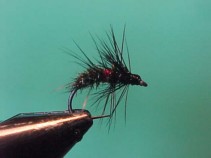
{{+1}}Royal Bibio{{-1}}
{{start}}
Bibios and bibio variants are amongst my favourite ten flies. This royal bibio version is always worth a swim, particularly if there are midge or damsels around. It's a variation of the original bibio except that the dubbed body has been replaced with the same sort of body you find on royal wulffs and hair-winged-royal-coachman to name just a few.{{end}}
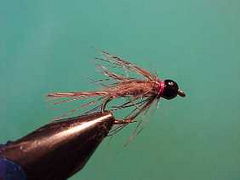
{{+1}}TBH hybrid caddis spider{{-1}}
{{start}}
This is my favourite hybrid of a spider fly and a bead head nymph with a tungsten bead up front. I carry this fly in two sizes and find them particularly useful in situations where I need a bit of weight to get a fly down yet still want the anchor fly to fish well and be enticing to trout rather than just being an anchor for other flies in the team. This is a great buggy looking fly and the tail and soft hackle provide plenty of movement.{{end}}
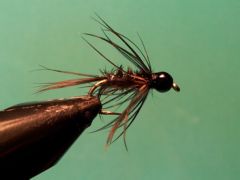
{{+1}}TBH brown and peacock hybrid spider{{-1}}
{{start}}
Brown and peacock hybrid spider nymphs are good buggy looking flies and the tail and soft hackle provide plenty of movement. One of these hybrid spider nymphs on the top dropper and two unweighted spiders or nymphs below can be a real tease for trout.{{end}}
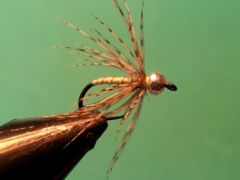
{{+1}}Tungsten bead head chartreuse and partridge spider{{-1}}
{{start}}
Bead head spiders fish very well in conjunction with traditional spider flies and give you the opportunity of adding a bit of flash to your team and more importantly get your team down a little. The benefit of that of course is that the added depth gives a little more vertical travel to your team of flies as they swing round at the end of the drift and start to lift, which as we all know is when the majority of hits occur when swinging spiders.{{end}}
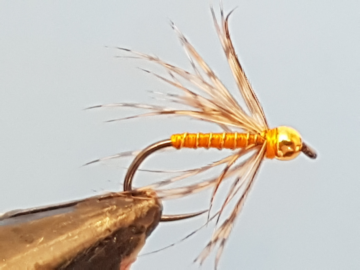
{{+1}}Tungsten bead head orange and partridge spider{{-1}}
{{start}}
I nearly always fish my bead head spiders on the point in a team of two flies and with a relatively heavily weighted nymph such as a TBH duracell jig nymph, TBH collared hare and copper or TBH chocolate caddis nymph on the top dropper on the dropper 60 or 70 centimetres up the leader.{{end}}
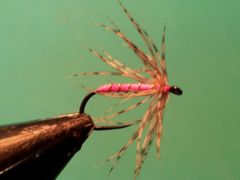
{{+1}}Partridge and pink spider{{-1}}
{{start}}
This is one of those flies that comes into its own on really bright days. The bright pink and the movement of the soft hackle in the water this fly often produce a hit. There is also the added benefit that they are so easy to tie. All river fly fishers should have a selection of English Spiders in their fly boxes.{{end}}
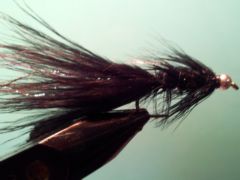
{{+1}}BH woolly bugger{{-1}}
{{start}}
I tie brown, black and olive versions of my bead head woolly buggers for my bugger fly box but its worth keeping in mind that whilst standard combinations like silver bead and wire on a black bugger or a brass beads on an olive or brown bugger work well this fly is a great fly to tie in a few different colour combinations. In any case I like to fish my bead head buggers on the point generally on intermediate to type 5 lines and to muck round with retrieve rates until I find the one working on the day.{{end}}
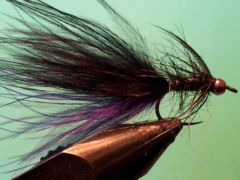
{{+1}}BH Tassi bugger{{-1}}
{{start}}
I have used it and this bead head version many times since to great effect. Like most woolly buggers it is often best when fished with short sharp twitching movements in order to make the marabou and hackle ‘work’ but its worth experimenting with a range of retrieves from dead drift through to “roly poly” to see what's working on the day.{{end}}
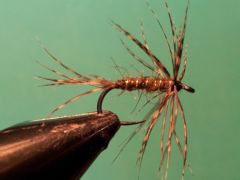
{{+1}}March brown spider{{-1}}
{{start}}
Where I fish, as the water warms up closer to lunch time your often find fish actively rising to March Brown Mayfly that are a mottled chocolate and dark grey in colour. I fish them in lakes to targeted rising fish, as a polaroiding fly and also as part of a loch style team and in river I find them a great swinging fly when fish are taking emergers just below the surface.{{end}}

{{+1}}Black Spectra nymph{{-1}}
{{start}}
I also tie it with a little added weight because if river water is a little dirty its often running a little stronger as well and I always reckon it best to get your fly down to where the fish are holding. The weight is also useful if you use this fly on the point of your loch fly team as it does help the leader to stay straight and decreases the incidence of loose line.{{end}}













